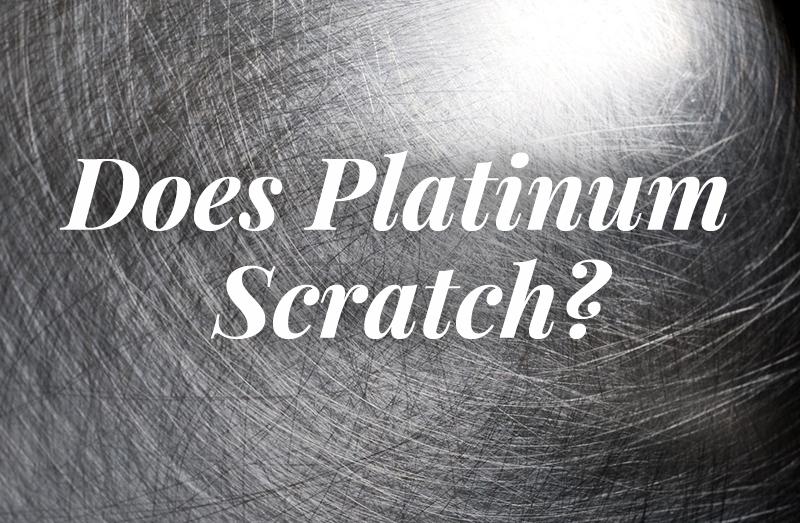Click here to get this article in PDF

Does Platinum scratch?
Platinum remains the most luxurious precious metal used in jewellery design. Buyers rarely question the rarity and value of this prized element. However, many buyers remain uncertain about its durability and scratch resistance.
Put simply, this gleaming precious metal scratches over time despite Platinum’s cost and luxurious reputation.
Like all precious metals, small scratches appear from the first day of wearing any jewellery item—especially those items worn on the hand—exposed to greater wear and tear.
The high polish of Platinum dulls to a natural semi-worn appearance. Small scratches are more evident on rings, including engagement rings and wedding rings. In contrast, platinum necklaces and earrings encounter less contact while being worn.
Platinum has a hardness of 4 – 4.5 on the Mohs scale of hardness. Basically, this means any harder material can scratch it. By comparison, diamond, the hardest substance, measures 10 on the same scale.
Besides its whiteness and density, we identify Platinum by the Hallmark added to jewellery, denoting a purity of 95% Platinum by a 950 Stamp included with the hallmark.
Platinum jewellery before and after polishing
The following videos show a Platinum wedding ring with wear, alongside a video of the same ring after a little time spent to file out scratches and to re-polish the metal.
The appearance of a brand-new Platinum ring
Brand spanking and newly polished, the surface of Platinum shines with a mirrored surface. Most new jewellery shines unless specifically finished with a textured or patterned effect.
The image below shows the appearance typical of Platinum and Palladium. Our image shows flush-set diamonds set into a Platinum wedding band.

Platinum and its ‘new’ mirrored polish
To illustrate the shiny surface of Platinum, our video reveals the gleaming finish of a brand-new wedding band. The surrounding mirrored surface shows the brand-new look of a typical Platinum band.
The appearance of small scratches on platinum
Scratches cannot be avoided on Platinum jewellery. From the first day worn, tiny scratches appear more visible over a polished surface. Small scratches and wear stand out against the brand-new look of a ring. Over time, wear builds over the surface of the ring.
Owing to the density of Platinum, scratches displace the surface without any loss of metal. Over time, the shiny finish reduces to a duller appearance.
In addition, scratches are not generally a sign of damage to the platinum. They are a natural part of the wear and tear of the jewellery.
A professional jeweller should polish the platinum as part of their work. Most professional jewellers use a dedicated finisher to achieve the final mirror-like polish.
Jewellers polish platinum as part of their work. Most professional jewellers use a dedicated finisher to achieve the final mirror-like polish. Contact your local jeweller for more guidance on getting jewellery professionally polished.
The process of re-finishing flattens the metal and restores the high shine. 950 Platinum includes 5% metal alloys. Either Cobalt or Ruthenium used within the Platinum alloy increases surface hardness. The 950 hallmark on a Platinum piece of jewellery denotes purity of 95 per cent pure Platinum.
Example of Heavy Wear on Platinum
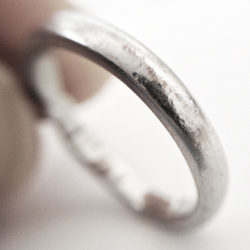
The above photograph shows heavy wear on a wedding ring. A combination of knocks, dents and scrapes appear over the surface of the ring. Heavy wear results in surface damage. Abrasive surfaces reduce the polish, resulting in a dull look to the ring.
Many small scratches result in a consistent look to the ring.
Showing New or Refinished Platinum
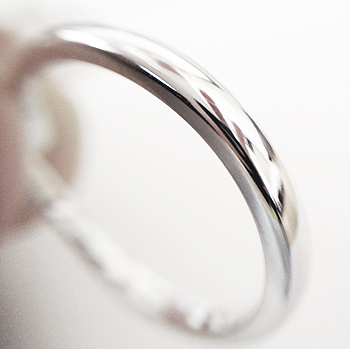
How we re-finish Platinum in our Ryde workshop on the Isle of Wight
As part of our service, we refinish Platinum items in our own workshop. Firstly, we file away dents and scratches to create an even surface. Once this has been completed, we work through several grades of emery in readiness for the polishing wheel, using an abrasive pasted. To finish, we polish the item with a soft buffing attachment to create the final high shine.
While light wear requires less intensive treatment, small scratches polish out fairly easily. Re-finishing the ring regularly restores the shine to an as-new condition. Unlike 18ct White Gold, Platinum has no Rhodium coating added to the ring. This is due to the natural whiteness of Platinum which does not require Rhodium plating.
Should you worry about Platinum wearing?
The important thing to remember is not to worry about the presence of small scratches or marks on a ring. Almost all re-polishing work is routine for most jewellers.
Pay special attention to small claws appearing worn around precious gemstones. The single most common cause of lost diamonds comes from worn claws.
We routinely check claws as part of the refinishing process. As a result, we can advise our clients if there appears to be any risk in gemstone settings.
Cleaning Platinum jewellery at home
Restore the shine of Platinum to a great extent using specialist cleaning materials. Restore the shine of Platinum with Connoisseur beauty wipes. We highly recommend the beauty wipes, which will restore the shine on Platinum and Palladium.
Each pack includes 25 reusable dry wipes. They contain a dry compound that removes tarnishes and dirt, fills small scratches, and never dries out.
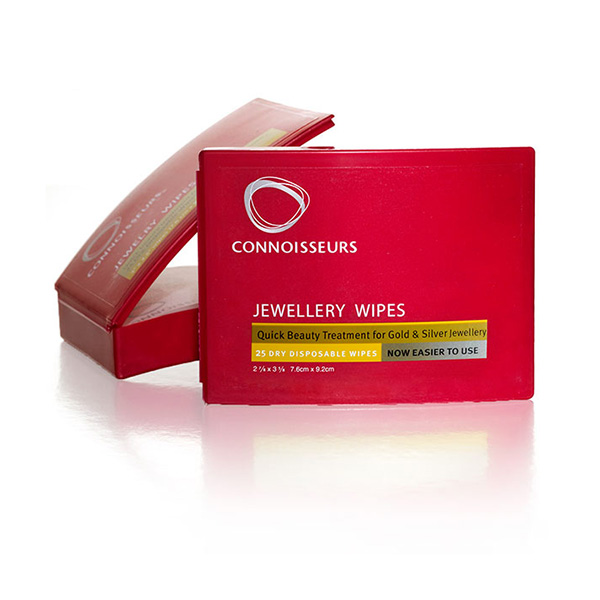
Care with fine Platinum detail.
Delicate details on platinum jewellery demand specialist attention. For example, milgrain edges are added to some ring designs. While many Platinum rings appear chunky, others include fine, delicate detail.
Professional jewellers exercise care when re-furbishing milgrain detailed jewellery. Most importantly, get expert help and guidance before anyone works on your ring. Contact our team for more help and guidance.
Platinum vs Rhodium-plated White Gold
Applied to white gold, Rhodium plating offers scratch resistance greater than platinum. However, Rhodium’s slow and gradual wear reveals the true tinted colour of white gold. As a result, many buyers choose Platinum in favour of its natural whiteness. In the coming years, some clients arrange for jewellery to be re-furbished.
Does Platinum scratch more easily than 14K Gold?
Although more durable, Platinum has a softer surface compared to 14k Gold. For this reason, it scratches more easily than 14k Gold. But remember, 14k Gold wears away, unlike Platinum.
What to do if your brand-new ring shows small scratches
Despite great care, your brand-new engagement ring sometimes reveals small scratches and wear. But remember, most rings wear within a very short time of putting the item on.
Remember, owing to the pristine, even surface, small marks are more visible. Rings do not keep their high polish where the ring makes contact with other objects.
Typically, we suggest a simple solution to improve the appearance of small scratches—A Dazzlestik or Beauty Wipes (see above). Or, send the ring back for a cleaning and refinish. Remember that rings eventually scratch again during daily wear, once back on the finger.
Do Platinum rings bend or break?
Platinum rings can bend, dent, scratch, twist and break with excessive force. Breaks occur most often on sizing lines and between the band and setting. In addition, knocked claws sometimes fail, especially once worn down.
Wear also depends on the thickness of the item and how much damage it receives. If you discover damage, even beyond repair, we can help.
Part of our work involves re-making items of jewellery. Read our dedicated article showing some of the jewellery re-made and re-modelled over the last few years.
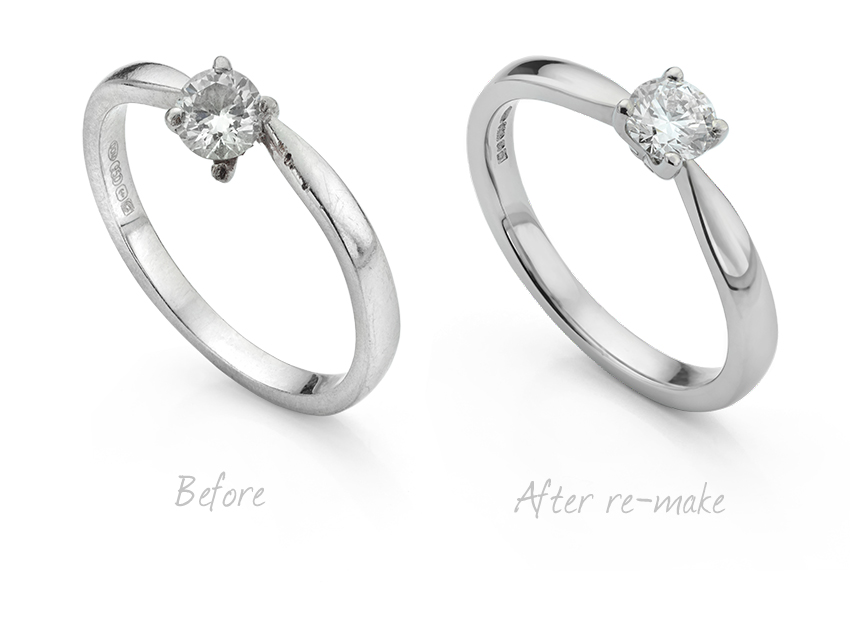
The post Does Platinum Scratch? How Durable is Platinum for Jewellery? appeared first on Serendipity Diamonds Blog.
